Senior Accounts Executive
100+ Senior Accounts Executive Interview Questions and Answers
Asked in Sociabble

Q. What software/tools are you proficient in using to enhance your sales efforts such as email, outreach, lead generation, and presentation?
Proficient in using Salesforce, HubSpot, LinkedIn Sales Navigator, and Microsoft Office Suite.
Salesforce for managing customer relationships and tracking sales activities
HubSpot for email marketing, lead generation, and CRM
LinkedIn Sales Navigator for prospecting and outreach
Microsoft Office Suite for creating presentations and reports
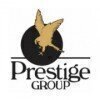
Asked in Prestige Group

Q. How To Prepare Cash Flow, What Is GR-IR, Which Type of Invoice Booking Has Done, What TDS Rate Do You Know.
Answering questions related to cash flow, GR-IR, invoice booking, and TDS rate.
To prepare cash flow, start with the opening balance and add all inflows and subtract all outflows to get the closing balance.
GR-IR stands for Goods Receipt - Invoice Receipt. It is used to reconcile the difference between goods received and invoices received.
There are different types of invoice booking such as direct booking, indirect booking, and recurring booking.
TDS rates vary depending on the ...read more
Senior Accounts Executive Interview Questions and Answers for Freshers
Asked in Sociabble

Q. Can you describe your approach to pricing discussions with enterprise clients and how do you ensure they see the value in your SaaS offering?
I focus on understanding client needs, demonstrating value, and aligning pricing with their business goals.
Conduct thorough research on the client's business and industry to tailor the pricing discussion.
Use case studies and testimonials from similar clients to illustrate the ROI of our SaaS solution.
Engage in consultative selling by asking open-ended questions to uncover pain points and align our solution with their needs.
Present tiered pricing options that allow clients to ...read more
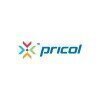
Asked in Pricol

Q. How would you process an invoice dated from a previous year?
The previous dated invoice of an earlier year should be processed in the current year with proper adjustments.
Check if the invoice is valid and accurate
Adjust the financial statements for the previous year if necessary
Process the invoice in the current year with the correct date and accounting treatment

Asked in Fiem Industries

Q. Type of TDS,Rate and Section, Criteria or checking Point Before Book Exp, What is Working Capital, What Is Provision, Method of Depreciation Calculation, Waht is HSN, and SAC code and Diff, How to Calculation o...
read moreA series of questions related to accounting and taxation.
TDS types, rates, and sections must be known for accurate tax calculations.
Criteria for checking points before booking expenses must be established to ensure accuracy.
Working capital refers to the funds a company has available for day-to-day operations.
Provision is an amount set aside for a specific purpose, such as bad debt or warranty claims.
Depreciation calculation methods include straight-line, declining balance, an...read more

Asked in Pricol

Q. If you could improve two things about yourself, what would they be?
I would improve my time management skills and my ability to delegate tasks effectively.
Prioritize tasks based on importance and deadlines
Set specific goals and deadlines for each task
Learn to say no to tasks that are not a priority
Delegate tasks to team members based on their strengths and workload
Regularly review and adjust task list to stay on track
Senior Accounts Executive Jobs
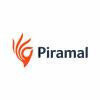


Asked in Sociabble

Q. Can you describe your typical sales cycle and how you manage it?
My typical sales cycle involves prospecting, qualifying leads, presenting solutions, negotiating, and closing deals.
Prospecting: I research potential clients and reach out to them to gauge interest.
Qualifying leads: I assess the needs and budget of the prospect to determine if they are a good fit.
Presenting solutions: I tailor my pitch to address the specific pain points of the prospect.
Negotiating: I work with the prospect to find a mutually beneficial agreement.
Closing deal...read more

Asked in Just Dogs

Q. What are the journal entries for day-to-day accounting, including sales, purchases, bank transactions, and other adjustment entries?
Journal entries for day-to-day accounting including sales, purchases, bank transactions, and adjustments.
Sales: Debit accounts receivable/ cash, credit sales revenue.
Purchases: Debit purchases, credit accounts payable.
Bank transactions: Debit/credit bank account based on transaction type.
Adjustment entries: Debit/credit relevant accounts for adjustments like depreciation, accruals, prepayments.
Example: Sales of $1,000 - Debit Accounts Receivable $1,000, Credit Sales Revenue $...read more
Share interview questions and help millions of jobseekers 🌟

Asked in Gumbi Software

Q. How to file gstr1 and 3b? What is blocked credit? Methods of providing depreciation? Some journal entries. Unbilled revenue
Answering questions related to GST filing, blocked credit, depreciation methods, journal entries, and unbilled revenue for Senior Accounts Executive position.
To file GSTR1, one needs to provide details of outward supplies made during the month. GSTR3B is a summary of all transactions made during the month.
Blocked credit refers to the input tax credit that cannot be claimed due to certain restrictions or ineligibility.
Depreciation can be provided using various methods such as ...read more
Asked in Avcom Infotech

Q. What is GST due date, Do you have Experience in TDS, have you filled GSTR9 & GSTR9C individually etc.
GST due date is 20th of the following month, TDS experience is required, GSTR9 & GSTR9C are annual returns.
GST due date is 20th of the following month for filing returns and payment.
Experience in TDS (Tax Deducted at Source) is necessary for the role.
GSTR9 is the annual return to be filed by regular taxpayers, while GSTR9C is the reconciliation statement to be filed by taxpayers with turnover above a certain limit.
Knowledge of GST compliance and deadlines is crucial for the S...read more

Asked in Just Dogs

Q. What are Tax Deducted at Source (TDS) and Goods and Services Tax (GST)?
TDS is a tax deducted by the payer at the time of making payment, while GST is a consumption tax on goods and services.
TDS is deducted by the payer from the payment made to the payee and deposited with the government.
GST is a value-added tax levied on most goods and services consumed in a country.
TDS is applicable on income like salary, interest, commission, etc., while GST is applicable on the supply of goods and services.
TDS rates vary based on the type of payment and the p...read more
Asked in Someshwar Plasto Chem

Q. If a company is showing positive cash flows, can it still be in financial trouble?
Yes
Positive cash flows do not guarantee financial stability
The company may have high levels of debt or other financial obligations
The positive cash flows may be temporary or unsustainable
The company may be experiencing operational inefficiencies or declining sales
Examples: A company with high debt payments or a declining market share

Asked in B2B Exports

Q. How do you ensure accuracy and compliance when managing financial records in a fast-paced environment?
I prioritize accuracy and compliance through systematic processes, technology, and continuous training in a fast-paced environment.
Implement regular audits to identify discrepancies early, ensuring financial records are accurate.
Utilize accounting software that automates calculations and compliance checks, reducing human error.
Establish a checklist for compliance requirements specific to our industry, ensuring all records meet regulatory standards.
Conduct training sessions fo...read more

Asked in Mynd Solutions Private

Q. What is the Bill To Ship To model?
Bill To Ship To model is a business model where the billing address and shipping address are different.
It is commonly used in e-commerce and wholesale businesses.
The buyer provides the billing address and the seller ships the product to a different address provided by the buyer.
It is useful for gifting purposes or when the buyer wants to ship the product to a different location.
It requires additional documentation and verification to prevent fraud.
It can also be used in drops...read more

Asked in Mynd Solutions Private

Q. What is P2P Cycle? What are the steps?
P2P Cycle is the process of procuring goods or services from a supplier and paying for them.
The process starts with identifying the need for goods or services.
Then, a purchase order is created and sent to the supplier.
The supplier delivers the goods or services and sends an invoice.
The invoice is matched with the purchase order and goods receipt.
The invoice is approved for payment and payment is made to the supplier.
Finally, the payment is reconciled with the accounts payable...read more

Asked in Stanley Lifestyles

Q. Tell about the accounting rules and how to reverse the invoice posted entry in company books using SAP software.
Accounting rules and reversing invoice posted entry in SAP software
Accounting rules include principles like matching principle, revenue recognition, and accrual accounting
To reverse an invoice posted entry in SAP, use transaction code FB08
Enter the document number of the invoice to be reversed and the reversal date
Make sure to check the reversal document before posting it to ensure accuracy
Asked in Level A Commodity Services

Q. What is the percentage for Section 94c in the case of an individual?
Section 94c in case of individual is 30%.
Section 94c in case of individual is 30%
This refers to the tax deduction allowed for individuals under Section 94c of the Income Tax Act
It allows individuals to deduct 30% of their gross total income before calculating the tax liability

Asked in Comviva Technology

Q. What were your responsibilities and how did you perform them?
As a Senior Accounts Executive, I managed client accounts, ensuring satisfaction and driving revenue growth through strategic planning.
Developed strong relationships with clients to understand their needs and provide tailored solutions.
Conducted regular account reviews to assess performance and identify opportunities for upselling.
Collaborated with cross-functional teams to ensure seamless service delivery and address client concerns promptly.
Utilized CRM software to track in...read more
Asked in Xenage Solutions

Q. Last work experience.? What is debit note and credit note.? What is handling work pressure? Waht is chesh with customer for payment process? How to tackle delay payment from customer side?
Debit note and credit note are financial documents used in accounting to record transactions. Handling work pressure involves staying organized and prioritizing tasks. Chasing customers for payment involves effective communication and follow-up. Tackling delayed payments requires patience and negotiation skills.
Debit note is a document issued by a seller to a buyer, indicating a debt owed by the buyer for goods or services received.
Credit note is a document issued by a seller...read more

Asked in Just Dogs

Q. What are the basic accounting concepts and conventions?
Basic accounting concepts and conventions are fundamental principles that guide the preparation and presentation of financial statements.
Going Concern Concept - Assumes that the entity will continue to operate indefinitely.
Accrual Concept - Revenue and expenses are recognized when earned/incurred, not when cash is received/paid.
Consistency Concept - Accounting methods and practices should be consistent from one period to another.
Matching Concept - Expenses should be matched w...read more
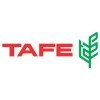
Asked in Tractors and Farm Equipment

Q. What is the golden rule, miro entry, what is the provisions, what is freight
The golden rule is to treat others as you would like to be treated. Miro entry is a double-entry accounting system. Provisions are liabilities. Freight is the cost of transporting goods.
Golden rule: treat others as you would like to be treated
Miro entry: double-entry accounting system
Provisions: liabilities
Freight: cost of transporting goods
Asked in Apollo Green Energy

Q. Can you walk us through a typical project billing cycle using your preferred software?
The project billing cycle involves planning, tracking, invoicing, and payment collection using accounting software.
Project Setup: Define the project scope, budget, and timeline in the software, e.g., creating a new project in QuickBooks.
Time Tracking: Use tools like Harvest to log hours worked by team members, ensuring accurate billing based on time spent.
Expense Management: Record any project-related expenses in the software, such as materials or subcontractor fees, for comp...read more

Asked in B2B Exports

Q. Can you describe a situation in which you identified a financial discrepancy?
I discovered a financial discrepancy during a routine audit, leading to corrective actions and improved processes.
Conducted a quarterly audit of accounts receivable and noticed a $5,000 variance.
Investigated the discrepancy by cross-referencing invoices and payment records.
Identified that a client payment was recorded twice due to a data entry error.
Collaborated with the accounting team to correct the records and prevent future errors.
Implemented a new verification process fo...read more

Asked in CIE Automotive

Q. How do you calculate product and landed cost?
Product cost is calculated by adding direct and indirect costs. Landed cost includes product cost and additional expenses.
Product cost includes direct costs like raw materials, labor, and indirect costs like overheads.
Landed cost includes product cost and additional expenses like shipping, customs, and taxes.
Formula for product cost = direct costs + indirect costs.
Formula for landed cost = product cost + additional expenses.

Asked in VoPro Solutions Pvt. Ltd.

Q. How would justify expenses and how would make the budget for them
I would justify expenses by ensuring they align with company goals and provide a clear breakdown of costs. Budgeting would involve forecasting expenses, analyzing past spending, and seeking cost-saving opportunities.
Align expenses with company goals and objectives
Provide detailed breakdown of costs to show value
Forecast expenses based on historical data and future needs
Analyze past spending patterns to identify areas for improvement
Seek cost-saving opportunities through negot...read more
Asked in Apollo Green Energy

Q. How do you ensure compliance with accounting standards in project-based work?
Ensuring compliance with accounting standards in project-based work involves rigorous planning, monitoring, and documentation.
Understand Relevant Standards: Familiarize yourself with applicable accounting standards (e.g., GAAP, IFRS) that impact project accounting.
Regular Training: Conduct regular training sessions for the team to keep everyone updated on compliance requirements and changes in standards.
Detailed Project Plans: Create comprehensive project plans that outline f...read more
Asked in Apollo Green Energy

Q. How do you handle cost overruns and change orders in project accounting?
Managing cost overruns and change orders involves proactive monitoring, clear communication, and effective documentation.
Proactive Budget Monitoring: Regularly review project budgets against actual expenditures to identify potential overruns early.
Change Order Process: Establish a clear process for submitting and approving change orders, ensuring all stakeholders are informed.
Documentation: Maintain thorough documentation of all changes and associated costs to provide transpa...read more
Asked in Apollo Green Energy

Q. How do you prioritize your tasks when managing multiple projects at once?
Effective task prioritization involves assessing deadlines, impact, and resources to manage multiple projects efficiently.
Assess Urgency and Importance: I use the Eisenhower Matrix to categorize tasks, focusing on what is urgent and important first. For example, if a project deadline is approaching, I prioritize tasks that directly impact that deadline.
Set Clear Deadlines: I establish clear deadlines for each project and break them down into smaller tasks. For instance, if I ...read more
Asked in Apollo Green Energy

Q. How do you track and manage project budgets and actual costs?
Effective budget tracking involves monitoring expenses, forecasting costs, and adjusting plans to ensure financial goals are met.
Budget Planning: I start by creating a detailed budget that outlines projected costs for each phase of the project, such as materials, labor, and overhead.
Regular Monitoring: I track actual expenses against the budget using tools like Excel or project management software, updating records weekly to identify variances.
Variance Analysis: If actual cos...read more

Asked in S N N Builders

Q. What is the purpose and significance of the TDS (Tax Deducted at Source) section?
TDS ensures tax collection at the source of income, promoting compliance and reducing tax evasion.
TDS is a means of collecting income tax at the source of income, ensuring timely tax payments.
It applies to various payments like salaries, interest, rent, and professional fees.
For example, if a company pays an employee ₹50,000, it may deduct TDS before disbursing the salary.
TDS rates vary based on the type of payment and the recipient's status, e.g., individuals vs. companies.
I...read more
Interview Questions of Similar Designations
Interview Experiences of Popular Companies
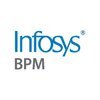

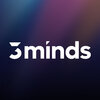



Calculate your in-hand salary
Confused about how your in-hand salary is calculated? Enter your annual salary (CTC) and get your in-hand salary


Reviews
Interviews
Salaries
Users










